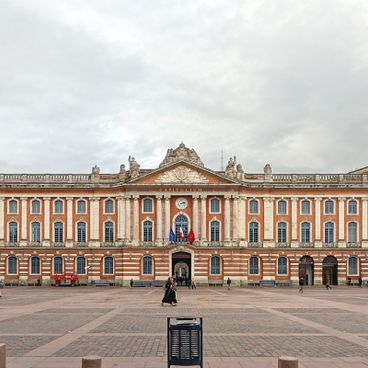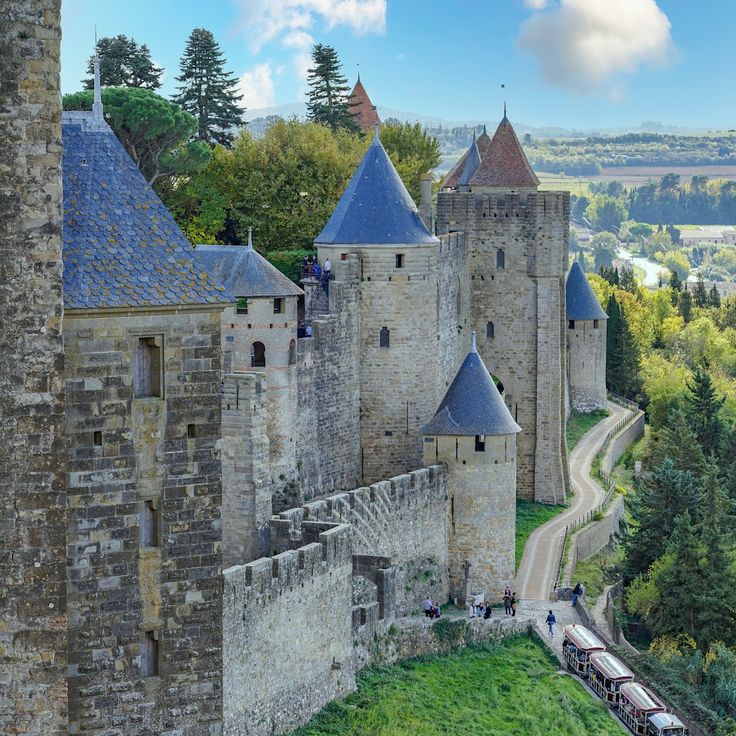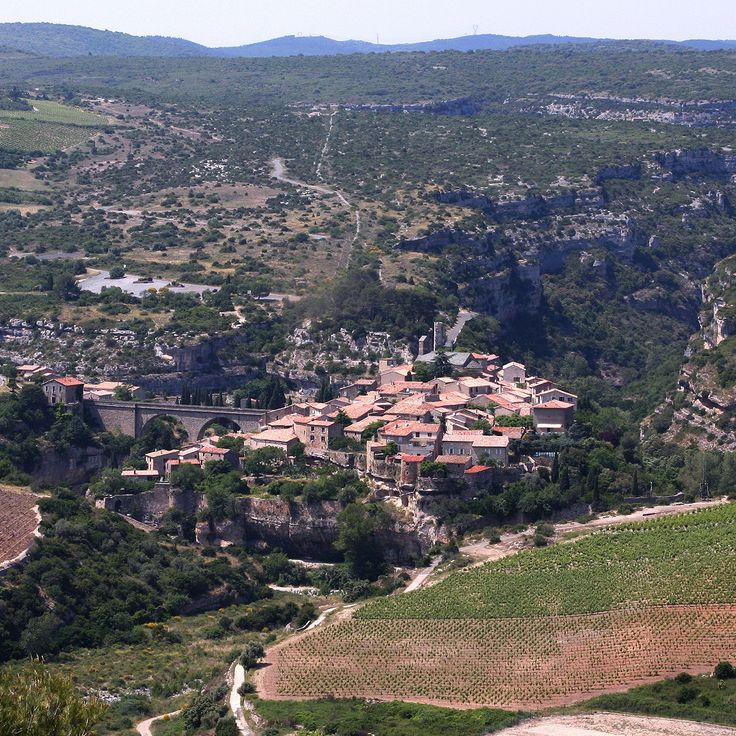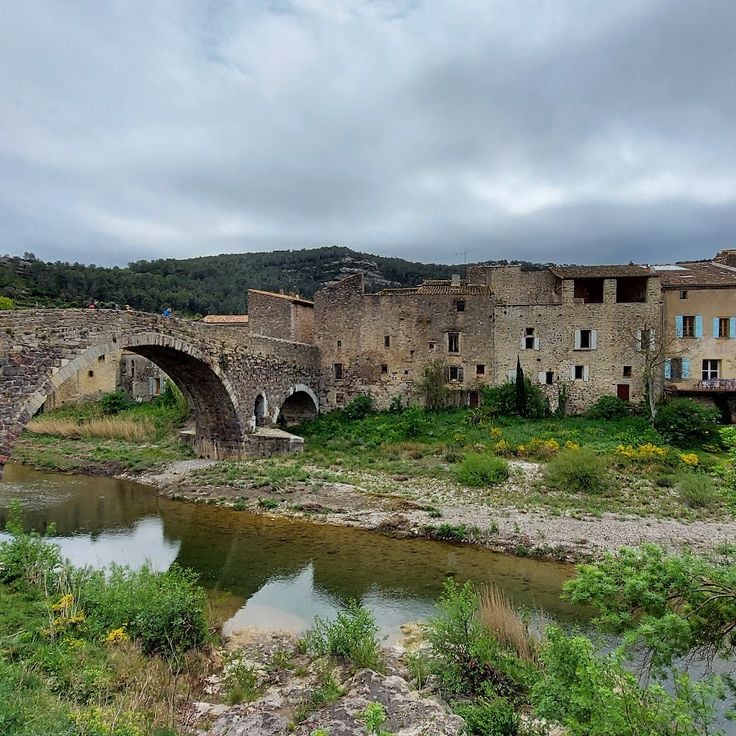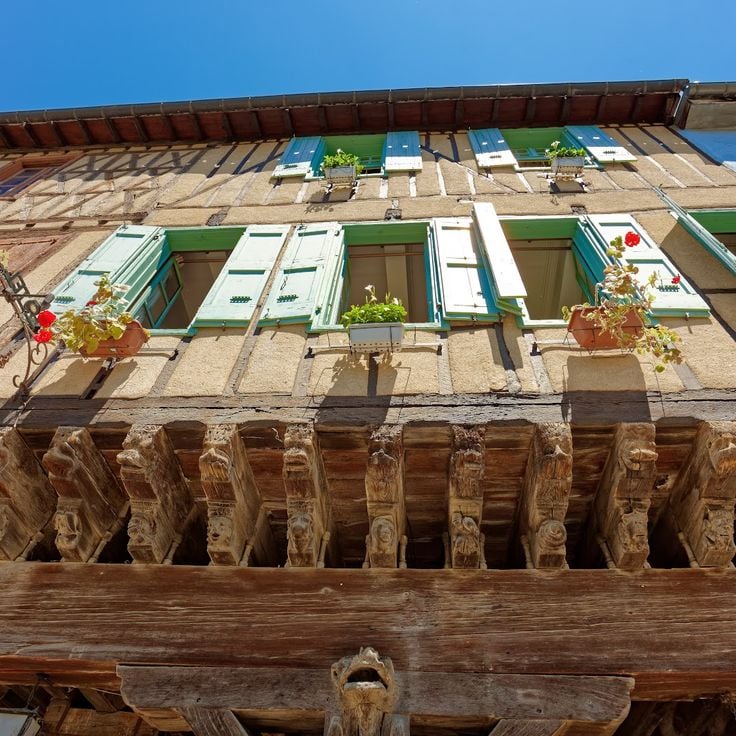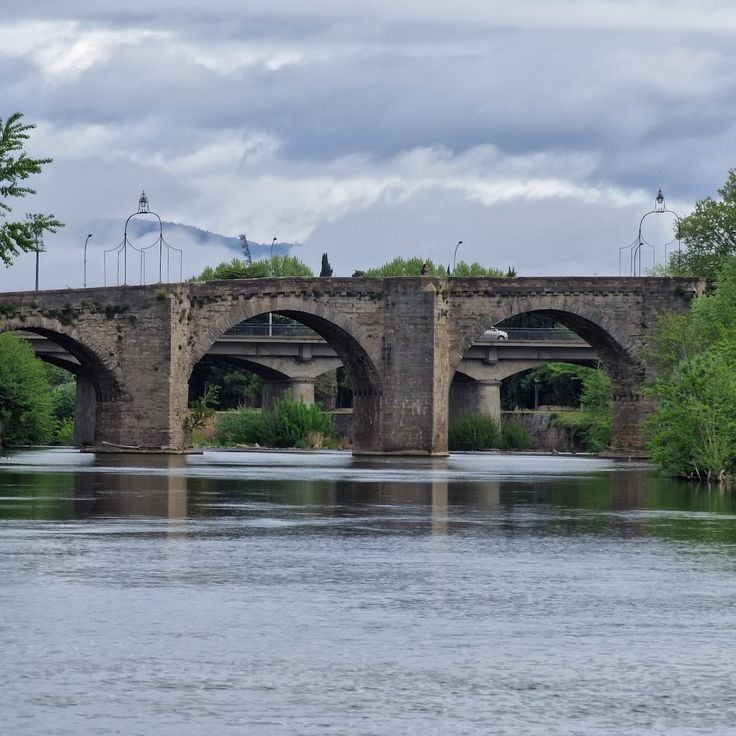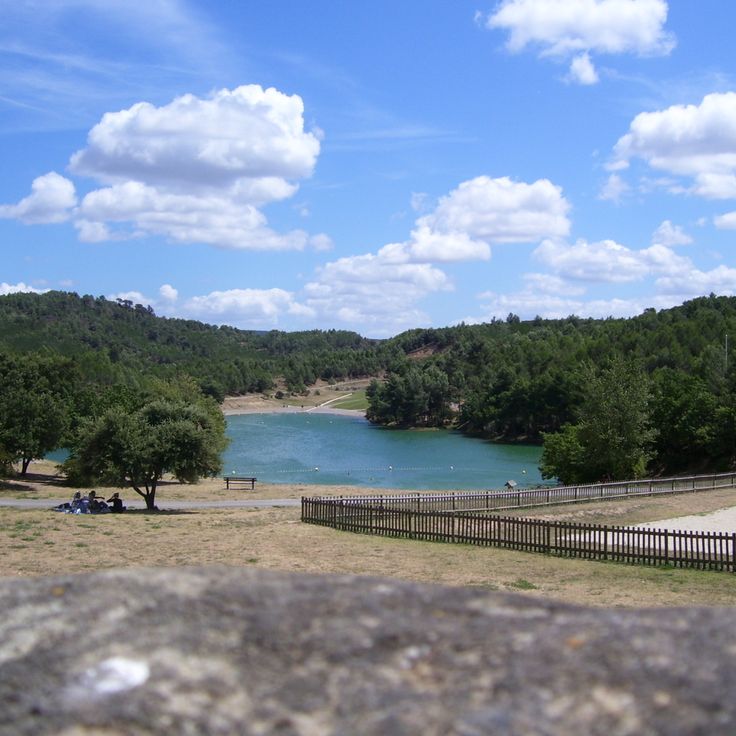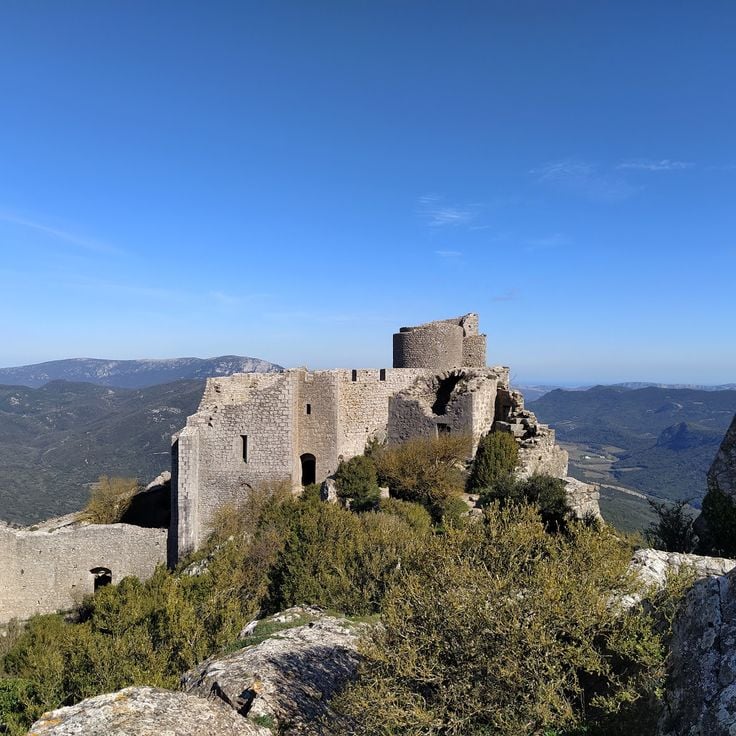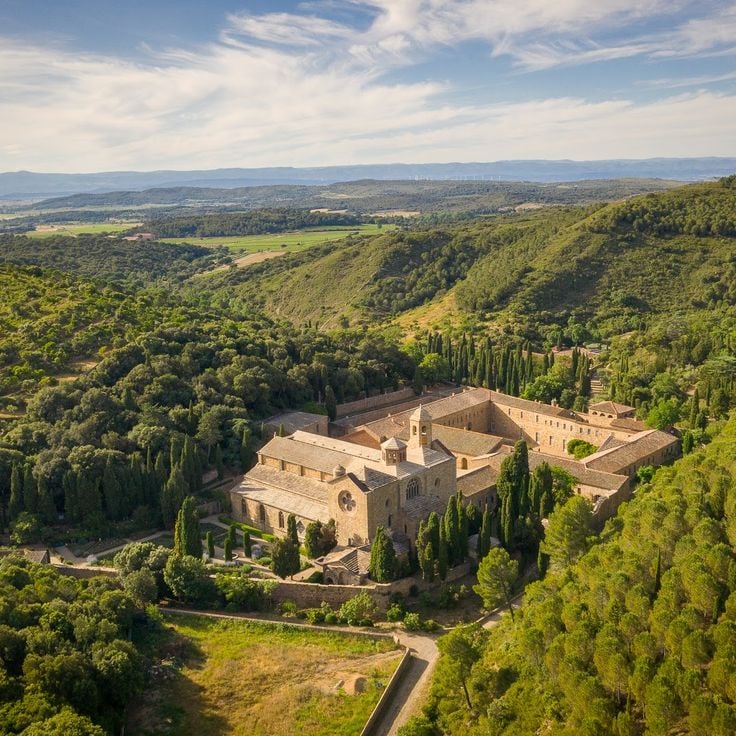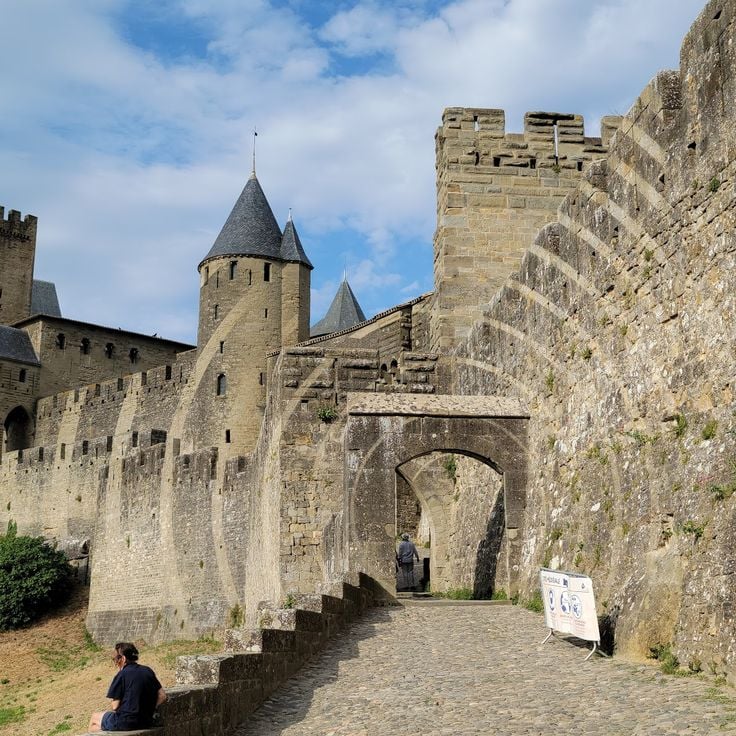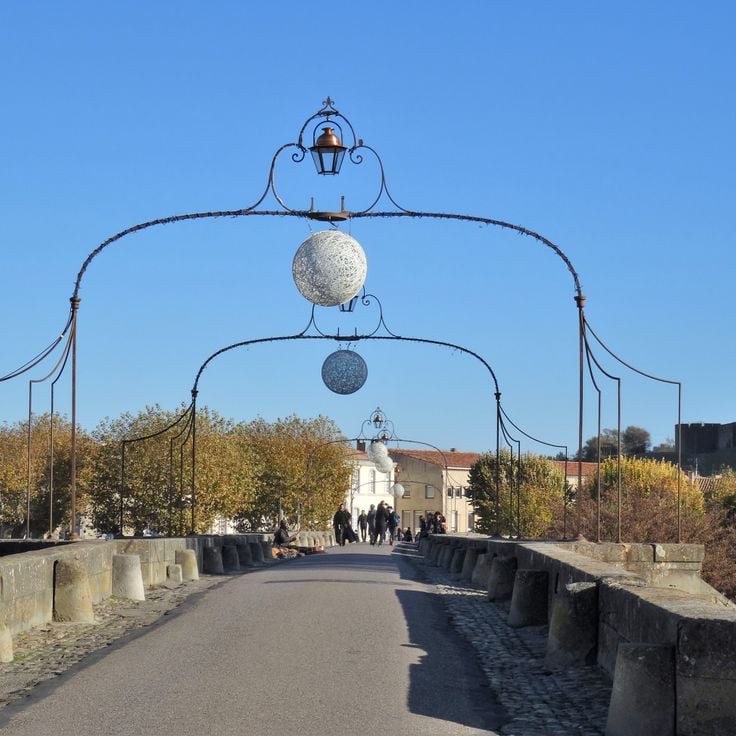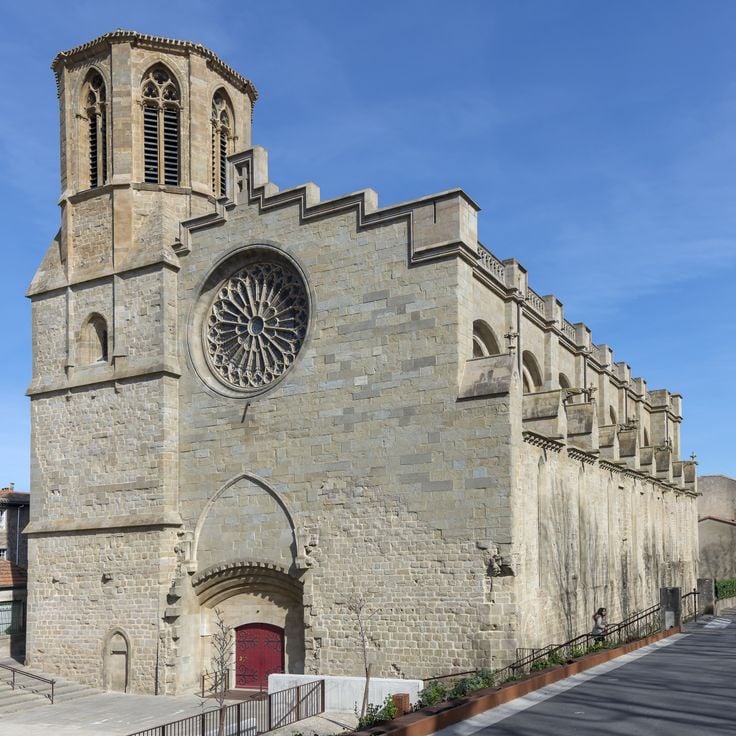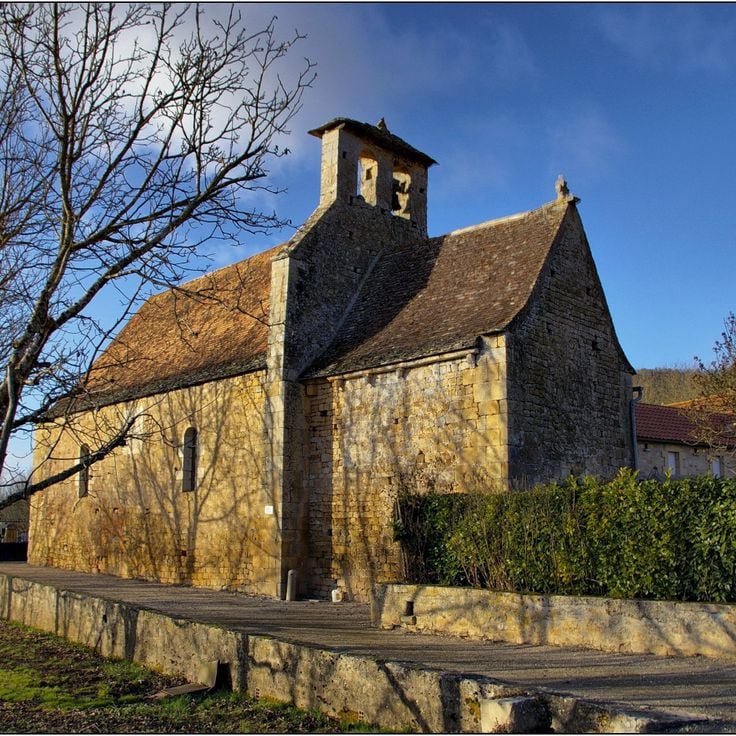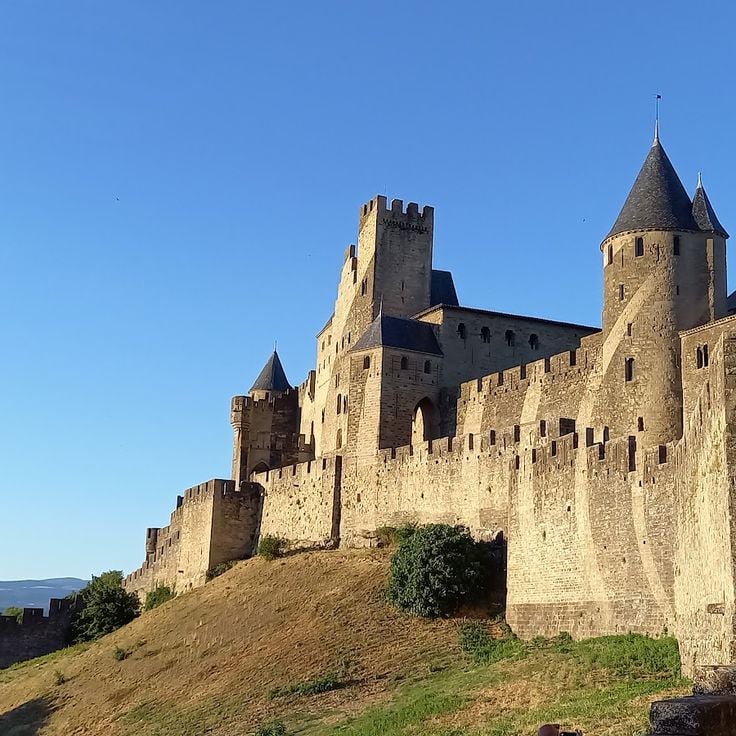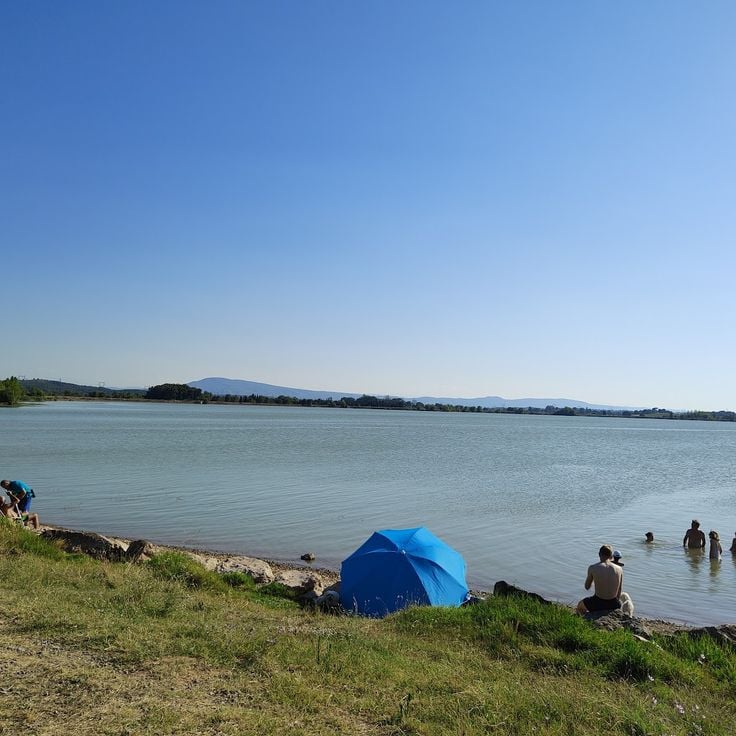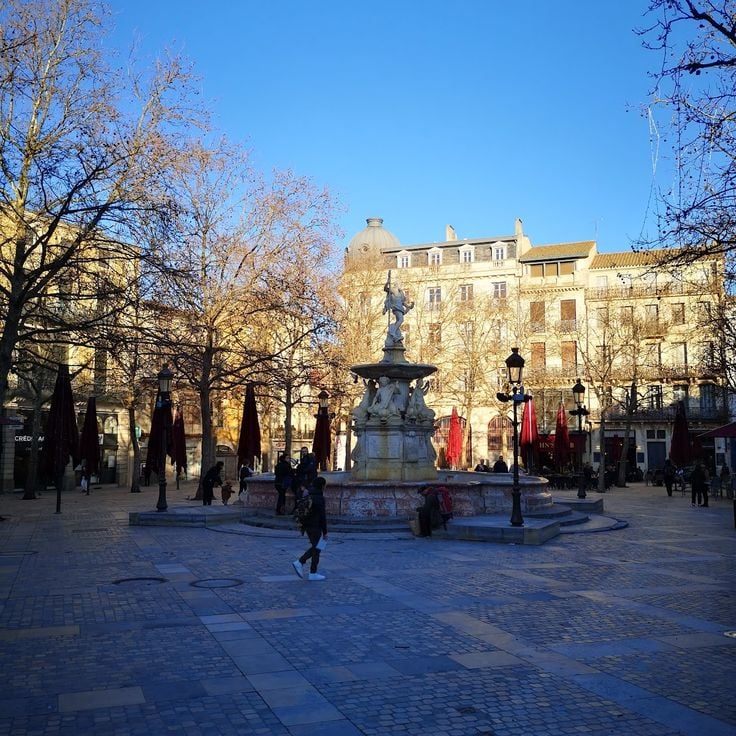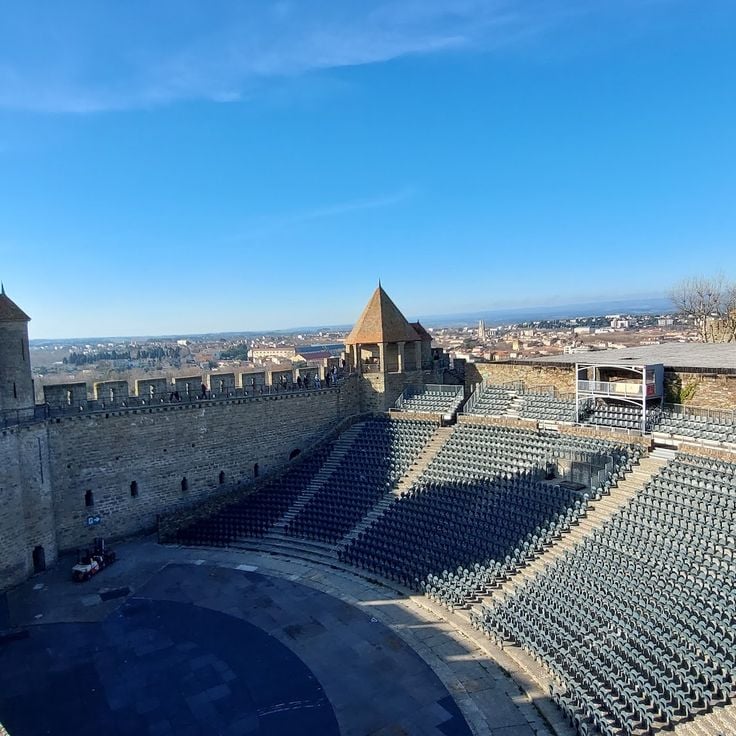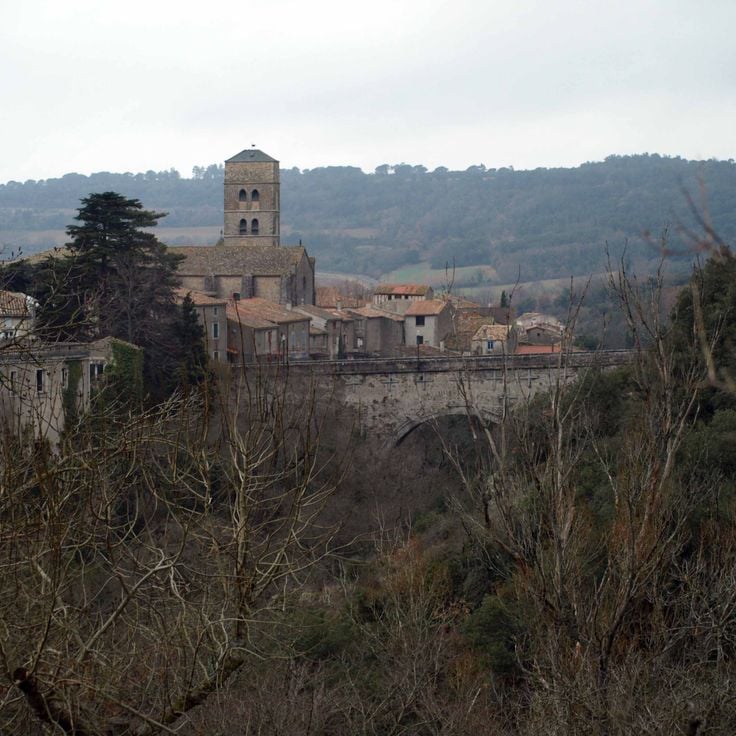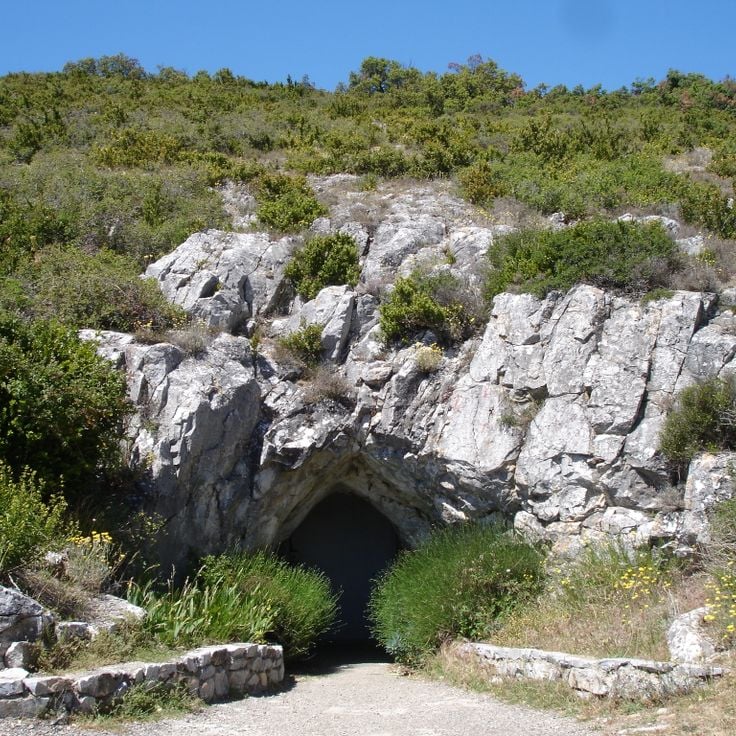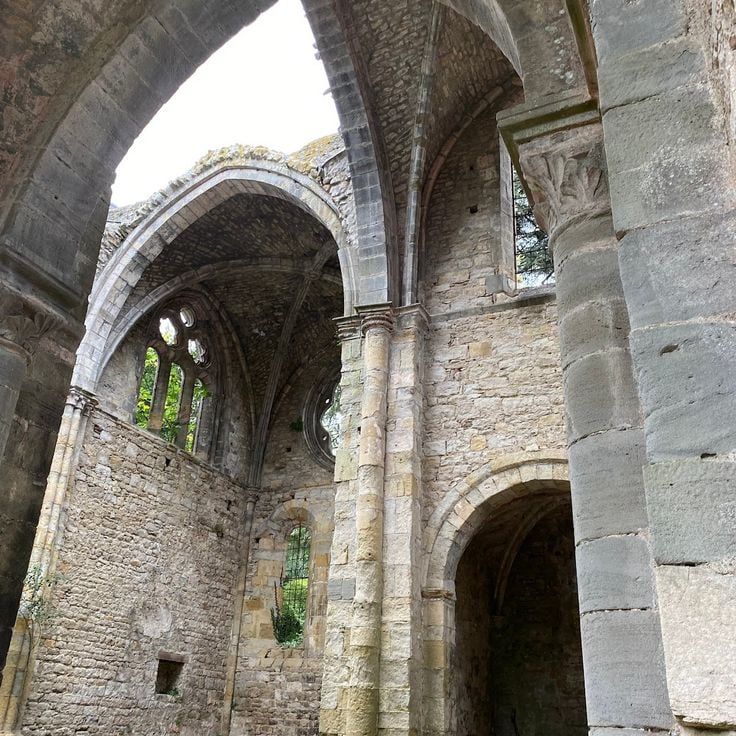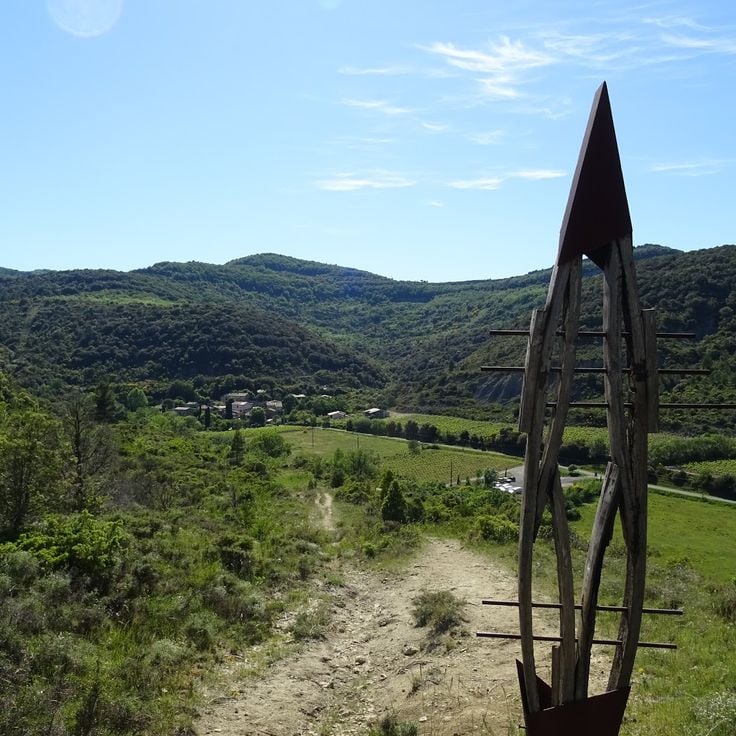The region around Carcassonne features an area marked by medieval and Cathar history, with castles, abbeys, and old villages. The Cité of Carcassonne displays its city walls restored in the 19th century by Viollet-le-Duc, while the Canal du Midi has traversed the region for 240 kilometers since the 17th century. The castles of Quéribus and Peyrepertuse overlook the landscape from their rocky spurs at over 700 meters above sea level, serving as the last strongholds of the Cathar resistance in the 13th century. Villages like Minerve and Lagrasse showcase medieval architecture, with narrow streets, ancient bridges, and Benedictine abbeys. The region also includes the four Lastours castles aligned along a ridge, the Saint-Maurice Cathedral in Mirepoix with its 22-meter-wide Gothic nave, and natural sites like Lake Cavayère. These monuments and landscapes form a representative ensemble of the south of France’s historical and natural heritage, accessible from Carcassonne.
The Cité de Carcassonne is a medieval fortress from the 13th century with ramparts restored in the 19th century, serving as the centerpiece of these walks exploring Cathar castles, medieval villages, and historic monuments across the region. Its fifty-two towers and three kilometers of walls form the core of Carcassonne's historical landscape.
The village of Minerve in this collection represents the medieval heritage of the Carcassonne region. Minerve sits on a limestone plateau at the confluence of the Brian and Cesse gorges, where two rivers have carved natural bridges through erosion. Narrow streets and old stone buildings define the character of the village, connecting it to the broader history of Cathar-era settlements in southern France.
The village of Lagrasse is part of this journey through southern France's medieval and Cathar heritage. The town grew around a Benedictine abbey founded in the 8th century and rebuilt in the 14th century. The Orbieu river flows through the village and is crossed by a medieval stone bridge with several arches. The narrow streets preserve old houses and the remains of fortifications that reflect life in a distant past.
The four castles of Lastours stand in a line along a rocky ridge: Cabaret, Tour Régine, Surdespine and Quertineux. Built between the 11th and 13th centuries, these fortresses controlled the iron mines of the valley and monitored the communication routes through the Montagne Noire. The castles of Lastours display Cathar defensive architecture and were besieged during the Albigensian Crusade. They form part of the historic landscape around Carcassonne, where castles, abbeys and old villages tell the story of the region's medieval past.
The House of the Consuls in Mirepoix is a 14th-century building that fits within this region of medieval and Cathar history. Its facade displays wooden sculptures showing figures, animals, and plant motifs. The building stands in Mirepoix, a town with Gothic architecture and historical monuments accessible from Carcassonne.
The Canal du Midi is a 17th-century waterway that appears in this collection of walks around Carcassonne as a historic route through the region's medieval castles and villages. The canal stretches 240 kilometers from Toulouse to the Mediterranean Sea and features 63 locks. Built under Louis XIV, it shapes the landscape of Occitanie with its towpaths, old bridges, and tree-lined banks where travelers can walk alongside the water and experience the region's layered history.
The Saint-Maurice Cathedral in Mirepoix is part of the historic monuments that define these walks around Carcassonne. This Gothic building dates from the 14th century and features a nave that spans 22 meters in width. In the 19th century, the cathedral was restored and redesigned under the direction of architect Viollet-le-Duc.
Quéribus Castle in Cucugnan is part of the walks around Carcassonne that showcase medieval and Cathar history. This fortified castle was built in the 11th century at 728 meters altitude on a rocky spur in the Corbières mountains and served as the last outpost of Cathar resistance against the Albigensian Crusade. The fortifications include a polygonal keep and a Gothic chapel with a palm-vaulted ceiling. The castle held out until 1255, when it became a French royal stronghold.
This lake near Carcassonne is a reservoir created in 1988 for irrigation, surrounded by pine forest. Lake Cavayère offers summer water activities such as swimming and pedal boating, and several hiking trails wind through the wooded surroundings. The site complements the collection's focus on the region's historical monuments and natural features, providing a place to spend time outdoors in this landscape shaped by medieval and Cathar history.
This castle rises on a rocky spur at 800 meters altitude in the Corbières mountains and stands as part of the Cathar fortress heritage around Carcassonne. Peyrepertuse consists of two fortified sections, the lower castle and the San Jordi keep, connected by a staircase carved into the rock with 156 steps. The ramparts extend nearly 300 meters in length and overlook the surrounding valleys.
Fontfroide Abbey represents the religious heritage within this region defined by medieval Cathar history. This monastery was founded in 1093 and includes a cloister, chapter house, terraced gardens and a Romanesque church. Cistercian monks inhabited the abbey until 1901, shaping its spiritual and community life for nearly 800 years.
The Cabrespine Chasm is a natural cavity in the Montagne Noire that adds a geological dimension to this region of medieval and Cathar history. Plunging 250 meters into the earth, the chasm displays calcite and aragonite formations that have developed over millennia. Located in an area defined by fortified villages and castles, this underground cave offers a different perspective on the landscape that surrounds the historic monuments above ground.
The Basilica of Saint-Nazaire in Carcassonne represents the medieval heritage that defines this region of castles and old villages. Built between the 11th and 14th centuries, this church blends Romanesque and Gothic styles. Inside, medieval stained glass windows and the Romanesque nave tell the story of how the building was constructed and modified over centuries.
The Château Comtal is central to these walks around Carcassonne, as it embodies the medieval past of the region. This 12th-century fortress sits within the city walls and features two defensive walls, defensive towers, and exhibition halls displaying military history. The castle shows the defense strategies and daily life during the era of the Counts of Carcassonne.
The Pont Vieux is a stone bridge dating from the 14th century that allows pedestrians to cross the Aude River toward the Bastide Saint-Louis. It stands at the heart of the area around Carcassonne, marked by Cathar history and medieval architecture. This bridge connects the old walled city with its newer quarter and is part of the historical network that links castles, abbeys, and ancient villages.
Saint-Michel Cathedral was built between the 13th and 14th centuries in the southern French Gothic style and stands in the Bastide Saint-Louis district. This religious building represents the architectural heritage of the region around Carcassonne, which is marked by medieval and Cathar history. The cathedral displays characteristic Languedoc architecture, with a single nave typical of Gothic churches in this region.
This medieval church sits at an elevated position with direct views of the Pyrenees and the fortifications of Carcassonne. It connects to the region's medieval and Cathar history, surrounded by castles, abbeys, and old villages. The church allows visitors to see the landscape and city walls from above, offering a perspective on the area's past and its relationship to the fortress and mountains.
This abbey in Caunes-Minervois was an important religious center of the region during the Middle Ages. Founded in the 8th century, it displays various architectural styles from the Early Middle Ages to the Classical period. The church is built in southern Gothic style, the cloister dates from the 18th century, and a Romanesque crypt lies beneath the abbey. Within the context of walks around Carcassonne, this abbey fits into the region's religious and medieval monuments.
The Narbonnaise Gate serves as the main entrance to the medieval fortified city of Carcassonne, fitting into the network of castles, abbeys, and old villages that characterize this region. It features two massive towers and a defensive system with a barbican that protected access to the city walls restored in the 19th century.
The Porte d'Aude is the western defensive gate of the city of Carcassonne and displays the characteristic staggered access typical of medieval military architecture. It stands among the historic monuments of this region marked by medieval and Cathar history, accessible from the restored city walls of the Cité of Carcassonne.
Lac de Jouarres is an artificial lake near Olonzac that fits into the medieval landscape around Carcassonne. The lake covers 84 hectares and features a supervised beach during the summer season. Along the shore, you will find shaded areas for resting, designated picnic spots, and facilities for water and land activities. The lake offers a restful break from the region's historic sites.
Place Carnot is the central square of this collection's focus on Carcassonne, lined with stone arcades. A market takes place here three times a week, featuring local producers and traders. The square forms the heart of the city and bridges the medieval history of the region with the daily life of its inhabitants.
The Théâtre Jean Deschamps is an outdoor performance space situated in the courtyard of the Count's Castle, serving as a cultural venue for this walk through Carcassonne's medieval and Cathar heritage. It hosts concerts and theatrical performances during the summer festival, with shows set against the backdrop of the medieval fortress walls, creating a connection between the region's history and contemporary cultural life.
La Bastide Saint Louis is the medieval quarter that connects the fortified Cité to the Canal du Midi in this region of Carcassonne walks. Built in the 13th century following a regular grid plan, La Bastide Saint Louis features straight streets that link the historic center with the canal, complementing the medieval and Cathar heritage explored throughout the area.
Montolieu has become a village where books take center stage, offering visitors a place to wander through medieval streets filled with second-hand bookshops, art galleries, and craft workshops. Situated at an elevation of 400 meters, this village invites people to explore its winding lanes and discover the character that has made it a destination for those who love reading and local craftsmanship.
The Cérès Franco Museum in Montolieu houses 1500 works of folk, naive, and singular art assembled by Cérès Franco. Located in a former cooperative cellar, the museum displays artistic expressions that developed outside academic traditions. Within the wider cultural landscape around Carcassonne, where medieval monuments dominate, this collection offers a different perspective on creativity and artistic practice. The works provide direct insight into how artists explore form, color, and subject matter on their own terms.
The Grotte de Limousis fits into the walks around Carcassonne by showcasing the region's underground wonders. This cave system features an extensive network with limestone formations, a subterranean river, and a 4-meter aragonite chandelier, one of the largest formations of its kind in Europe.
This Cistercian monastery was founded in 1180 in a wooded valley and is part of the historical monuments around Carcassonne. The preserved buildings include a cloister with rounded arches, a vaulted chapter house, and several conventual galleries. The remains show the spatial layout typical of 12th-century Cistercian establishments.
The sculpture trail at Mayronnes is a 5-kilometre walking route through the garrigue with modern artworks and installations set within the natural landscape. As part of the region around Carcassonne, this trail offers a contemporary artistic perspective alongside the medieval castles, abbeys, and villages that define the area's heritage. The path blends outdoor activity with exposure to current artistic expression against the backdrop of southern French scrubland.
The Château de Pennautier is part of the walks around Carcassonne and displays 17th-century architecture. Built in 1620 in Louis XIII style, this castle features formal French gardens. The estate produces AOC Cabardès wines and offers guided tours through historical interiors, including decorated reception rooms and vaulted cellars. Visitors can explore the architecture and learn about the winemaking tradition maintained here for centuries.
Similar collections
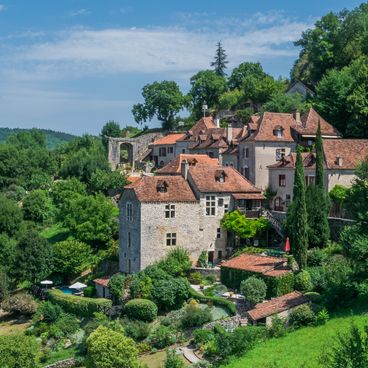
Medieval villages in Occitanie: Cathar castles, limestone gorges, historical sites

Lakes of Occitanie: Pyrenees, Massif Central, mountain lakes, and reservoir lakes
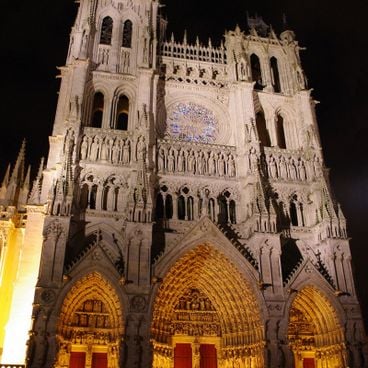
Historical buildings in France: castles, cathedrals, Roman architecture
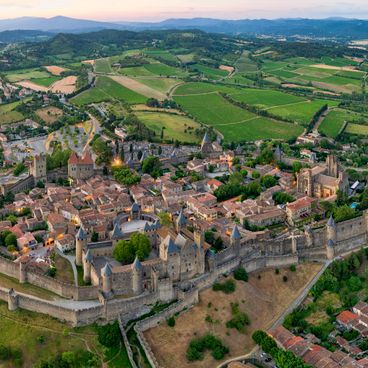
Villages and towns from medieval France: history, architecture, UNESCO sites
